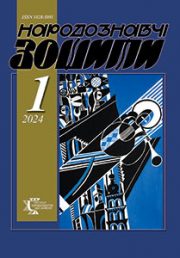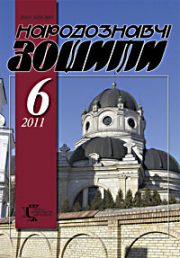The Ethnology Notebooks. 2019, 1 (145), 130—141
UDK 7. 01. 26: 7. 04
DOI https://doi.org/10.15407/nz2019.01.130
VILKHOVETSKA Kateryna
ORCID ID 0000-0002-5251-4252
Postgraduate,
Kyiv National University of Culture and Arts
Chigorin Str., 20, Kyiv, 01042, Ukraine
Contacts: e-mail: vilkhovetska.art@gmail.com
Abstract. Iconography in Lavra has a centuries-old tradition, trends that influenced church art on the territory of all Ukraine originated here. Lavra’s craftsmen adapted the best experience of eastern and western culture, they synthesized and interpreted according to their own aesthetic tradition.
This article traces the formation of the style of the Lavra icon painting school and its traditions of art education. The first part contains the consideration and analysis of the activities of the Lavra icon painting schools from the 17th century to the beginning of 20th century in search of a new artistic language and a penchant for the influence of folk art. The importance of I. Yizhakevych’s teaching and his creative searches within the framework of the canon with the use of folk art motifs for the school of Lavra and church art in general is emphasized.
Members of the named after I. Yizhakevych creative association, contemporary icon painters are following him in the striving of the new artistic language. The second part of the article in the form of short essays, created on the basis of interviews with these modern icon painters, introduces to their work, in which they continue the traditions of their predecessors.
The problems of education and the prospects for the development of church art and the role of the Lavra icon-painting school in the cultural context of the country are considered.
Keywords: Lavra icon painting school, church art, wall painting, icon painting, icon painter, folk art, artist, canon.
Received 31.01.2019
REFERENCES
Zholtovskyi, P.M. (1982). Drawings of the Kyiv-Lavra iconografic studio. Album-catalog. Kyiv: Naukova dumka [in Ukrainian].
Shydenko, V.A. (2008). Selected works from the history of Kyiv Pechersk Lavra. Kyiv: NKPHCP; Phoenix [in Russian].
Lopukhina O.V. (1999). Activities and artistic direction of the Lavra’s icon painting workshop of the XIXth and beginning of the XXIth centories. Lavrsky Almanac: Kyiv-Pechersk Lavra in the сontext of Ukrainian history and culture: Issue 2, 11—17 [in Ukrainian].
Dundiak, I. (2016). Ivan Yizhakevych and the church’s art of Ukraine of the second half of the XXth century. The ethnolodgy notebooks, 5, 1095—1101 [in Ukrainian].






